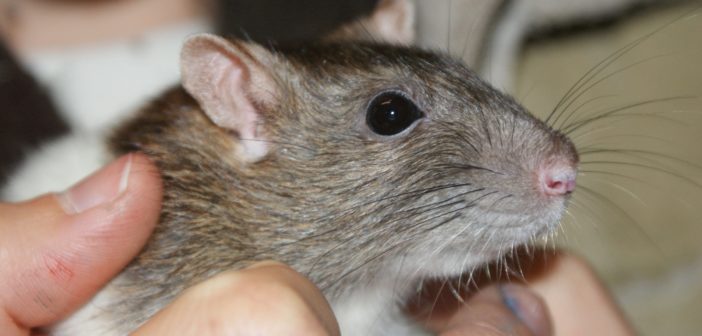Animal Aid reveals more grotesque warfare experiments on living animals. These experiments, described as “Rat Blunt Ocular Injury Model,” and conducted at the University of Birmingham, were found in a paper published in 2019.
The experiments involved numerous rats (the number is unclear) being anesthetized. They were then shot in one or both eyes with a plastic pellet, fired at 20 meters per second. This is equivalent to almost 45 mph. This is described as causing “extensive loss of retinal function.”
One group of animals were shot in both eyes and then immediately given an injection into their eyeballs. One eye was injected with Nec-1s (the substance being assessed) in a carrier liquid and the other eyeball was injected with just the carrier liquid. A week later, the animals were given identical injections, again directly into their eyeballs. A fortnight after the initial shooting, these animals were anesthetized, their bodies pumped with lethal chemicals, and their eyes removed and analyzed.
Other animals were shot in one or both eyes. They were killed at different points up to 48 hours after being shot and their eyes were removed and analyzed. Some albino animals were killed and their eyes removed so that certain cells could be removed and mixed with different concentrations of Nec-1s, and analyzed.
Nec-1s is known to affect the death of cells, so this why it was injected into the animals’ eyes.
The cruelty of these experiments is obvious. Animal Aid’s concerns are further increased for several reasons. Firstly, there is no mention of the animals being given any painkillers, despite being shot directly in their extremely sensitive eyes. Anyone who has ever received an eye injury will know, even small ones can be excruciatingly painful.

Secondly, the researchers do not mention any behavior changes in the animals. Clearly, any change in the animals’ vision would have been very distressing for them, especially if both eyes had been injured and they had suffered “extensive loss of retinal function” in addition to pain.
The data gathered from animal experiments cannot be reliably translated to humans. One reason for this is the multitude of differences between humans and animals. These include major differences between the eyes of humans and those of rats – rats do not have a macula and humans do. The macula is the central part of the retina, important for clear vision.
The researchers’ explanation for these experiments is that this type of injury “can cause visual loss in military and civilian populations.” However, it is known that “all soldiers are issued with polycarbonate spectacles and goggles for eye protection…but a low proportion were documented as wearing them at the time of injury.”
Says Jessamy Korotoga, Animal Aid’s campaign manager: “It is shocking to think that researchers, partly funded by the United Kingdom’s Ministry of Defence (MoD), are conducting such barbaric research. To shoot an animal in both eyes, and then to kill them, is totally horrifying. It is also deeply disturbing that there is no mention of pain killers being given.
“When you consider the huge differences between humans’ eyes and those of rats, and even between different strains of rats, the futility of these experiments is overwhelming.
“I would urge everyone who is concerned about these experiments to contact their MP. Please urge them to contact the Minister with responsibility for this issue, calling for a ban on warfare experiments on animals.”
These experiments were partly funded by the Ministry of Defence, A Fight For Sight, UK PhD studentship, The Drummond Foundation (UK), Sir Ian Fraser Foundation and Blind Veterans UK.
Read more information about other warfare experiments involving animals.
Featured image: close-up of a rat’s face. Image credit Kurt Morrow, CC BY-SA 2.0.





